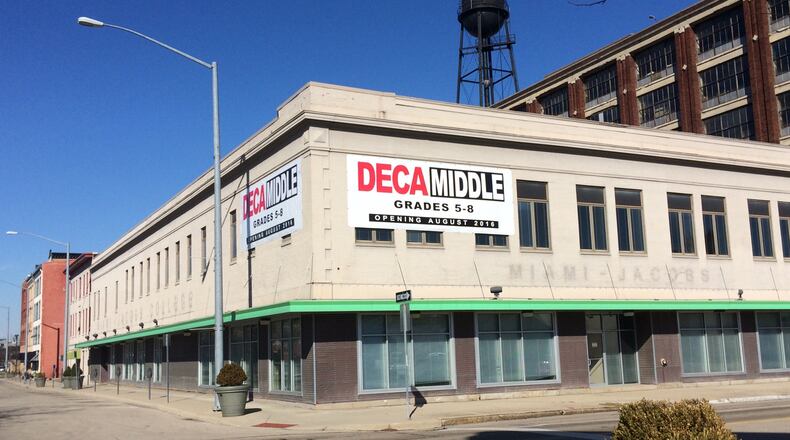RELATED: Episode 2: Let’s hear from the kids - The Path Forward: Dayton Schools podcast
“The most straightforward approach (to improving student achievement in these districts) is to drive more resources to the handful of Big Eight schools that are getting the job done, so they can replicate their models and serve more students in need of an excellent education,” the report says.
Fordham, a charter school think tank, analyzed state report card data and found only three out of five Ohio students are grade-level proficient in math and English language arts; they found fewer than 40 percent of students are on track to become college- or career-ready.
The report shows a strong correlation between student test scores and poverty, with all eight of Ohio’s large urban school districts well below the statewide average on standardized tests.
The Path Forward: The region must rally to fix the Dayton Public Schools
Fordham research director Aaron Churchill said the results do not bode well for Ohio’s future.
“We need to keep improving student achievement and get to the goal where all kids are ready for college and a career,” he said.
The report does note that while district-wide averages are low, the state’s largest districts all have individual schools that get a C or better on report cards, or that demonstrate high gains for students.
In Dayton, this includes five charter schools and six DPS schools. Dayton has 27 schools and there are 20 charters in Dayton.
The charter schools with the highest scores are Dayton Early College Academy, Inc., DECA Prep, Klepinger Community School, Horizon Science Academy Dayton Downtown, and Dayton SMART Elementary School.
RELATED: What a state takeover would mean for Dayton schools
The DPS schools on the list are Horace Mann Elementary, River’s Edge Montesorri Elementary, Ruskin Elementary, Stivers School for the Arts, Belle Haven Elementary, and Meadowdale Elementary.
DECA, which is sponsored by Fordham, had the highest grade. Its superintendent, Judy Hennessey, said what sets DECA apart is high expectations for students and a close relationship between school and home.
“What we think is that school has a lot to do with the culture inside the building and the relationship amongst the teachers, kids and their parents,” she said. “We spend a lot of time on relationship building.”
DECA’s three schools currently have 1,260 students and are increasing in size by about 30 students a year.
What do you think? Join the conversation on our Path Forward: Dayton Schools Facebook group.
Fordham’s report also pushes back on calls from politicians in both parties to overhaul the state’s accountability system. Some lawmakers have called for ditching letter grades or reducing reliance on standardized tests.
“Stop trying to shoot the messenger,” the report says. “Policymakers need to learn from the data that report cards provide and have the discipline to see through these reforms.”
Jeanne Melvin, spokeswoman for the educational advocacy group Public Education Partners, says assertions like Fordham’s can’t be taken seriously because they are based on testing that she says poorly assesses student progress.
“I don’t believe that test scores, the way that test scores are being used in Ohio, is a valid assertion of whether a school is failing or not failing,” she said. “I think Ohio is failing its students by having so much high-stakes testing.”
About The Path Forward
The Dayton Daily News has assembled a team to seek solutions to some of the region’s biggest problems. For past stories go to DaytonDailyNews.com/PathForward
‘High-quality’ schools in Dayton
Charter schools: Dayton Early College Academy, Inc., DECA Prep, Klepinger Community School, Horizon Science Academy Dayton Downtown, Dayton SMART Elementary School.
Dayton Public Schools: Horace Mann Elementary, River's Edge Montessori, Ruskin Elementary, Stivers School for the Arts, Belle Haven Elementary, Meadowdale Elementary.
Source: Fordham Institute
About the Author

